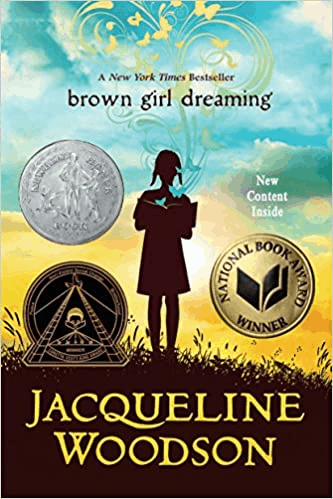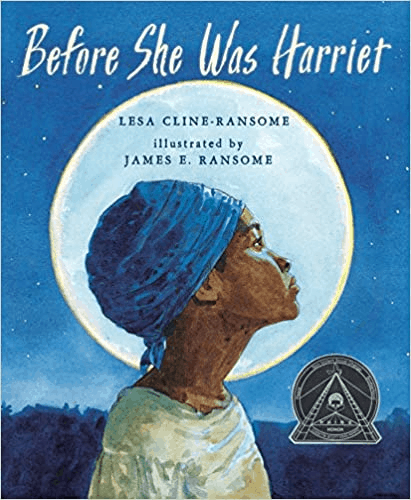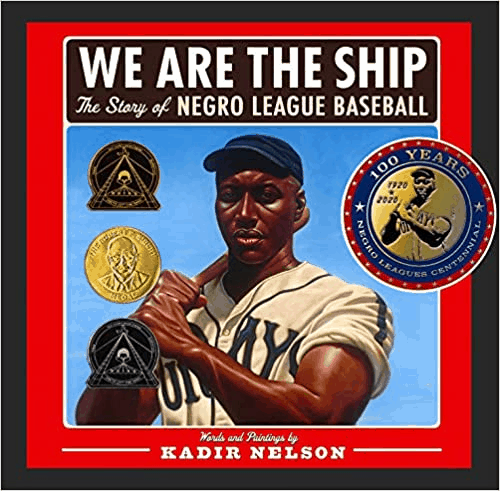When talking to your children about race and racism, there are many children’s books that may spark the conversation. Below are a few.

Brown Girl Dreaming, by Jacqueline Woodson
Suggested ages: 10 and up
2015 recipient of Newbery Honor Award, Coretta Scott King Award, National Book Award finalist
Jacqueline Woodson has gifted children’s literature with many moving and valuable books from juvenile fiction to picture books, many of which you will find in The Placitas Library’s collection. Brown Girl Dreaming is written as a memoir. In engaging lyrical free verse, Woodson shares the stories of her childhood. Her journey begins in her birth year of 1963. This was also a time of racial upheaval in our country – words of Martin Luther King Jr., Malcolm X and James Baldwin echoed across the land. And so, Woodson’s story begins.
Her memories are set in the intimate background of family and friendships where she begins to discover who she is – her talents, her yearnings, her place within her family. Though reading does not come easily, – “The words …curl around each other.” – her need to express herself in writing comes at an early age. She feels a compulsion to lay down words as she holds tight her first notebook with pages waiting to be filled with her thoughts. Woodson grapples with the effects of changing family dynamics and new friends – experiences that many children can connect to. She is a listener to all the life about her. “Even the silence has a story to tell you. Just Listen. Listen.” Overlaying her memoir is a feeling of hope and faith. Her words reflect an astounding depth in their simplicity. “I believe in one day and someday and this perfect moment called Now.” And that “perfect moment,” she believes, will be a world where each of us is in charge of our own story.
Today her eloquent word pictures create vignettes that children will not only relate to but also gain a window of understanding as they glimpse another young person’s journey in life.

Before She Was Harriet, by Lesa Cline-Ransome, illustrated by James E. Ransome
Suggested ages: 4-8 years
2018 recipient of Coretta Scott King Honor Award
Before She Was Harriet reveals a life story in a unique manner – Cline-Ransome begins with Harriet Tubman in her twilight years and then precedes back into time, highlighting the roles this courageous and determined woman played in her people’s lives and in the life of our country. We first see Tubman as a suffragist and then, as General Tubman, she ferries 700 slaves across the Combahee River to freedom. She is unrelenting in her desire to be a positive force that brings better lives for others – as a Union spy, a nurse, a loving daughter, as “Moses” leading runaway slaves along the Underground Railroad. Cline-Ransome then reaches back to when Tubman was herself a slave and a daughter. Harriet Tubman’s dream to live life as a free woman and her quest to bring that precious gift to others is one of the most inspiring stories in the history of our country. James Ransome’s two-page illustrations, dynamic and stirring, beautifully support Harriet Tubman’s story.

We Are the Ship, The Story of Negro League Baseball, words and paintings by Kadir Nelson
Ages 10 and up
2009 recipient of Coretta Scott King Award and Robert E. Sibert Medal (children’s informational book award)
Told in the easygoing voice of a fictional Negro League Baseball player, We Are the Ship gives the reader the sense he is hearing history from a wise old timer who has seen it all. The players come alive as Nelson highlights the ball players’ personalities and skills not only through his narrative style but as expressed through his vivid and bold oil paintings. These portraits radiate determination and strength. This little-known history begins with the first Negro Baseball League being formed in the 1920s after Black players struggled to get on professional teams and were still discriminated against when they formed their own teams. Then came the creation of a Negro Baseball League which put them in charge of their destiny. In the words of Rube Foster, founder of the Negro National League, “We are the ship; all else the sea.” Their style of play was different than the majors – fast, flashy and daring. Even though they were in control of their game and their play, the players continued to endure discrimination. White fans were often abusive, many restaurants in the South refused to serve Black customers, and in the North, segregation meant “Negro-only” hotels and rooming houses.
These men’s stories are inspiring. Their belief in themselves and their love of the game kept them playing. Not until 1947, when Jackie Robinson became a member of the Brooklyn Dodgers of the major league, did the Negro Leagues begin to decline. We are the Ship celebrates many unsung Black sports heroes as well as being an important recounting of a period in the American past which contributes to a better understanding of the present.
Besides books which have a historical context, it is important that children connect with books whose characters are diverse but whose stories are common to all children. Below is a sampling of picture books, which you will find in the Placitas Library, that do just that.
The Snowy Day, Goggles, and Pet Show by Jack Keats Alma by Juana Martinez-Neal
A Different Pond by Bao Phi They Say Blue, by Jillian Tamaki
Last Stop at Market Street by Matt de la Peña Get a Hit Mo! by David Adler
Swashby and the Sea by Beth Ferry My Papi Has a Motorcycle, by Isabel Quintero
Mary Had a Little Glam by Tammi Sauer